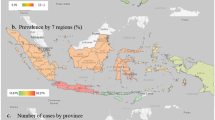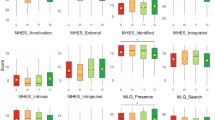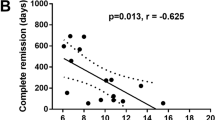Abstract
Both non-insulin-dependent (type 2) diabetes mellitus (NIDDM) and insulin-dependent (type 1) diabetes mellitus (IDDM) show a wide variation in incidence and prevalence in different populations. The prevalence of NIDDM varies from close to zero in some populations to 40-50% in the adults of Nauru (Pacific) and in the Pima Indians (North America). The incidence of IDDM in children under 16 years ranges from around 30/100 000 children per year in Finland and other Northern European countries to less than 1/100 000 per year in Japanese children. Many genetic and environmental factors combine to produce this variation. Among the suggestions made for NIDDM are the ‘thrifty genotype’ and, more recently, the ‘thrifty phenotype’ hypotheses of Neel and of Hales and Barker respectively. Genetic and environmental factors in IDDM in children have combined to create an apparent gradient of decreasing incidence from northern to southern European countries but with at least one local ‘hot spot’: the island of Sardinia. The factors responsible for this pattern, and the increasing incidence over time, require further clarification.
Similar content being viewed by others
Log in or create a free account to read this content
Gain free access to this article, as well as selected content from this journal and more on nature.com
or
References
Ahren B et al. Global estimates for prevalence of diabetes mellitus and impaired glucose tolerance in adults. Diabetes Care (in press).
WHO Study Group. Diabetes mellitus. Geneva: World Health Organization, 1985. Technical Report Series 727.
Neel JV . Diabetes mellitus: a ‘thrifty’ genotype rendered detrimental by ‘progress’? Am J Hum Genet 1962;14:353–62.
Cameron WI, Moffitt PS, Williams DRR . Diabetes mellitus in the Australian Aborigines of Bourke, New South Wales. Diabetes Res Clin Pract 1986;2:307–14.
Williams DRR, Moffitt PS, Fisher JS, Bashir HV . Diabetes and glucose tolerance in the New South Wales coastal Aborigines: possible effects of non-Aboriginal genetic admixture. Diabetologia 1987;30:72–7.
Dowse GK, Zimmet PZ, King H . Relationship between prevalence of IGT and NIDDM in a population. Diabetes Care 1991;14:968–74.
West KM, Kalbfleisch JM . Influence of nutritional factors on prevalence of diabetes in ten countries. Diabetes 1971;20:99–108.
Hales CN, Barker DJP, Clark PMS, Cox LJ, Fall C, Osmond C, Winter PD . Fetal and infant growth and impaired glucose tolerance at age 64. BMJ 1991;303:1019–22.
Hales CN, Barker DJP . Type 2 (non-insulin-dependent) diabetes mellitus: the thrifty phenotype. Diabetologia 1992;35:595–601.
Rewers M, LaPorte RE, King H, Tuomilheto J . Trends in the prevalence and incidence of diabetes: insulin-dependent diabetes mellitus in childhood. Worlds Health Stat Q 1988;41:179–89.
Green A, Gale EAM, Patterson CC . Incidence of childhood-onset insulin-dependent diabetes mellitus: the Eurodiab ACE study. Lancet 1992;339:905–9.
Kalits MA, Podar T . Incidence and prevalence of type 1 (insulin-dependent) diabetes in Estonia in 1988. Diabetologia 1990;33:346–9.
Bingley PJ, Gale EAM . The rising incidence of insulin dependent diabetes in Europe. Diabetes Care 1989;12:289–95.
Adams SF . The seasonal variation in the onset of acute diabetes. Arch Intern Med 1926;37:861–4.
Author information
Authors and Affiliations
Rights and permissions
About this article
Cite this article
Williams, D. Epidemiological and geographic factors in diabetes. Eye 7, 202–204 (1993). https://doi.org/10.1038/eye.1993.48
Issue date:
DOI: https://doi.org/10.1038/eye.1993.48



